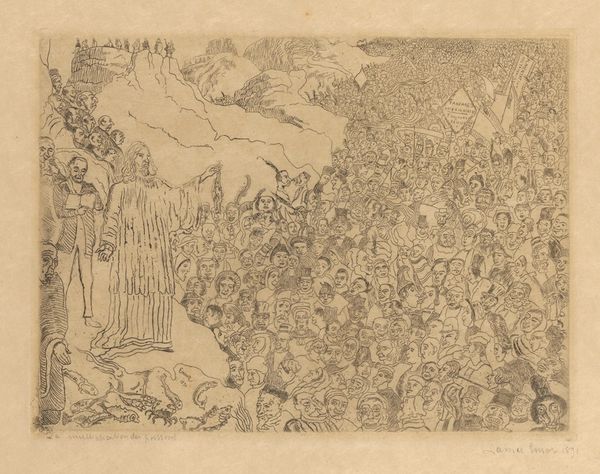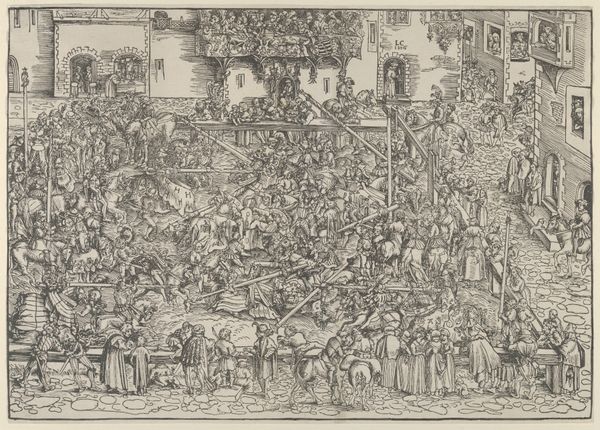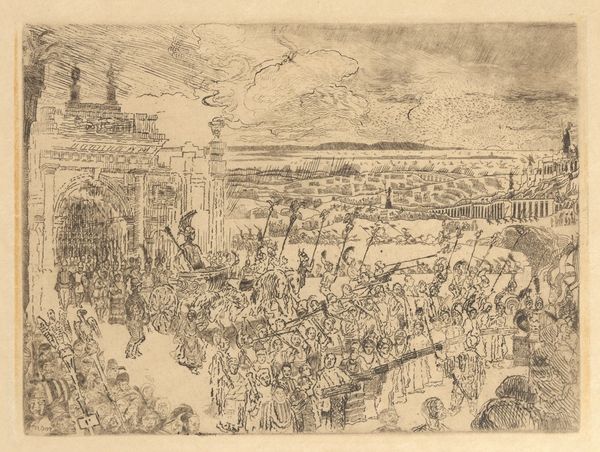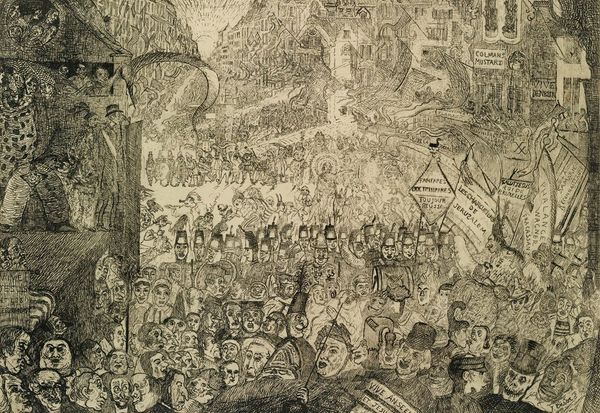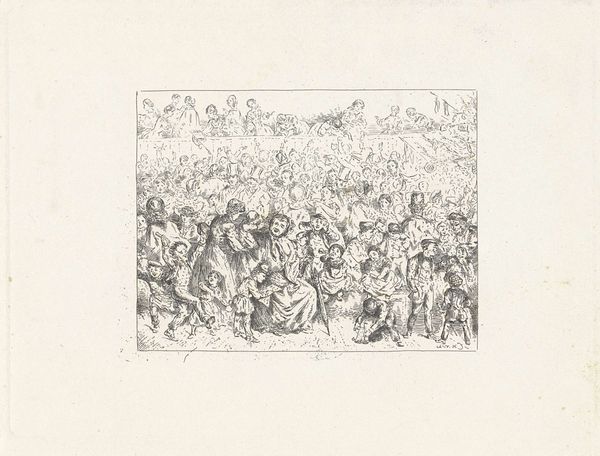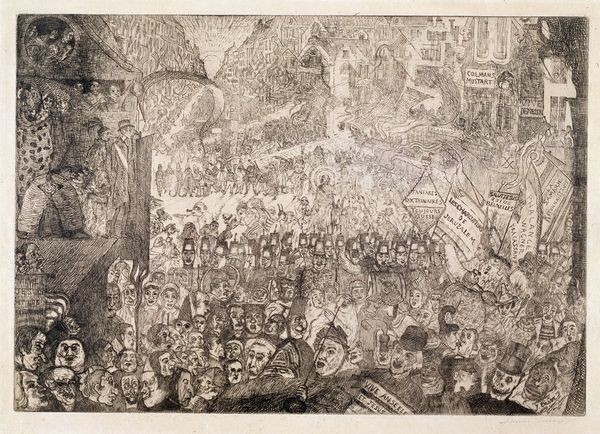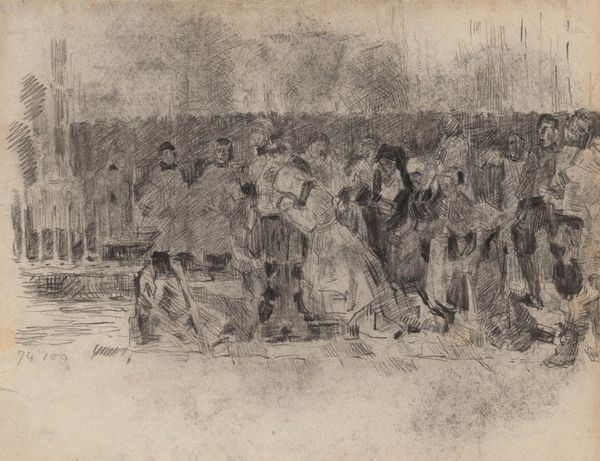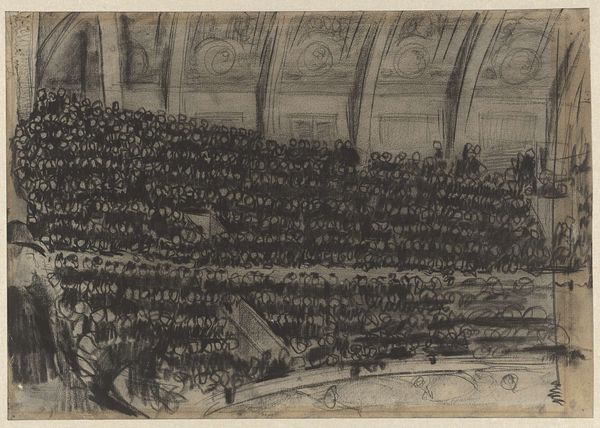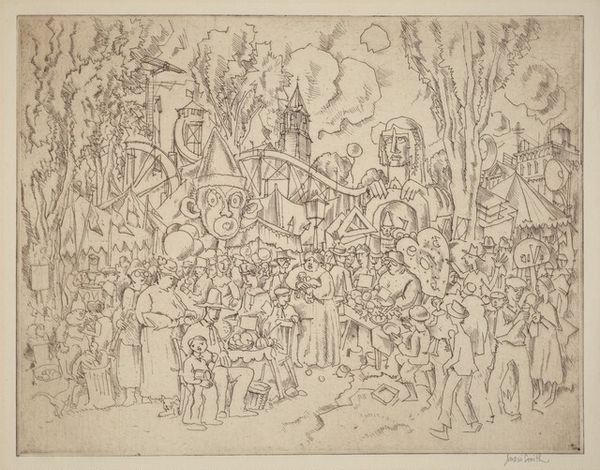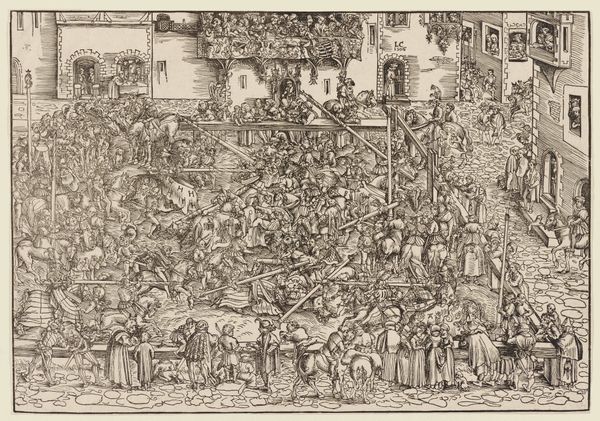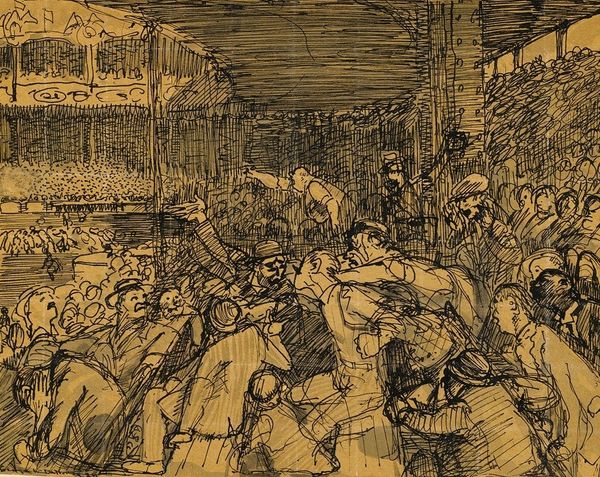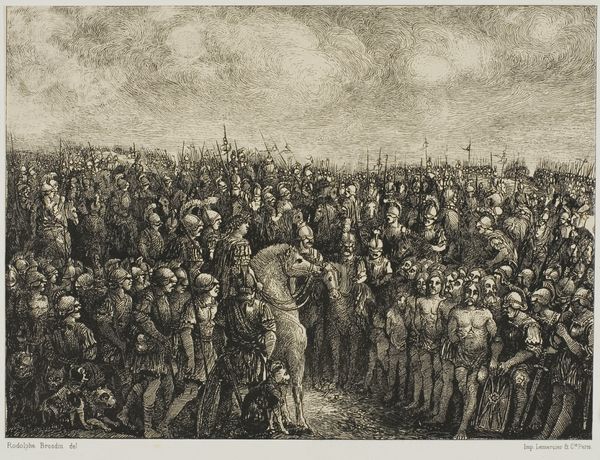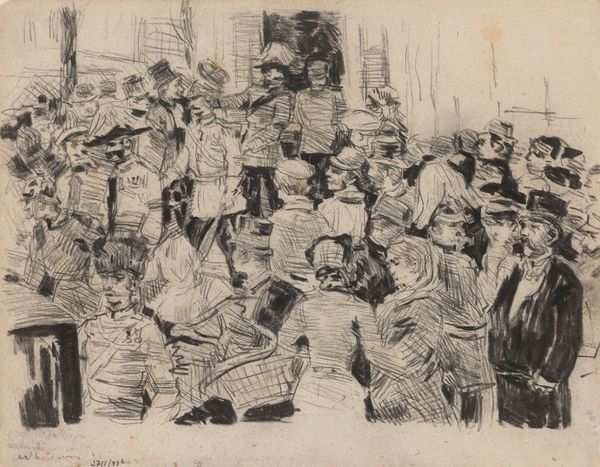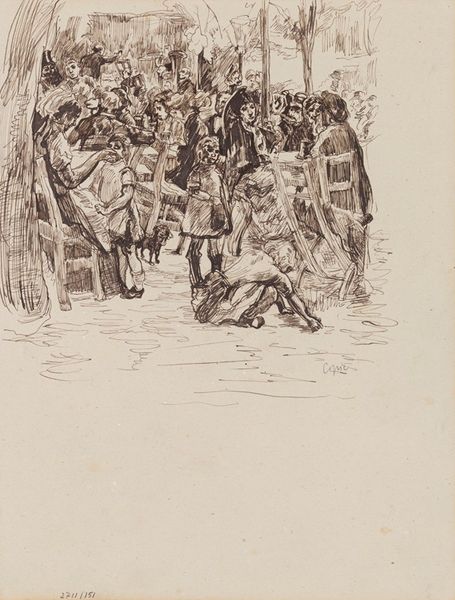
drawing, mixed-media, pencil
#
drawing
#
mixed-media
#
narrative-art
#
figuration
#
pencil
#
expressionism
#
mixed medium
#
watercolor
Copyright: Public Domain: Artvee
Curator: What a turbulent crowd, teeming with life and brimming with nervous energy. My eye struggles to find a resting place within it. Editor: You’re looking at James Ensor’s "The Multiplication of the Fishes," created around 1891 using pencil and mixed media. A truly remarkable and disquieting composition, wouldn't you agree? Curator: Indeed. Immediately, I see a swirl of masked faces; each one feels like a hidden aspect of a collective psyche, an archetypal mob. It speaks to both unity and monstrousness. Note the hats. What’s with the hats? Editor: Ha! Good eye. Historically, hats were frequently associated with occupation, aspiration, and social status—here, they create an ocean of conformity, unified beneath society’s many crowns, you might say. But look closer; aren't some of them subtly mocking this supposed social unity? Curator: I think so! The religious symbolism, too, feels laden with layers. We have what is evidently supposed to be Christ, or someone channeling Christ... But is he offering salvation or judgment to this sea of hungry faces? His figure, at first promising, now appears haunted by it. Editor: That ambiguous sentiment is further amplified through the execution—notice how the density of faces contrasts against the spare lines composing the supposed savior figure and his immediate surroundings? A calculated choice by Ensor. The fish are down in front... Curator: The very fish he's meant to multiply! Symbolically, there's so much dissonance in how the figures interact. What’s more, the very act of reproduction, so key to this New Testament moment, appears here to be more chaotic proliferation. Editor: Certainly, that sense of societal unrest is unmistakable. And the work becomes all the more arresting when considering that Ensor’s images foreshadowed Europe's turbulent 20th century. It anticipates a sort of collective, mass psychosis. Curator: Absolutely. Looking again, I find that the entire work resonates with a disturbing, premonitory quality, capturing something fundamentally unnerving about crowds. I'll certainly not look at social gatherings the same again. Editor: An encounter like this is always so affecting. One thing's sure, Ensor doesn't allow us to passively observe; he forces us into dialogue. A complex masterpiece.
Comments
No comments
Be the first to comment and join the conversation on the ultimate creative platform.
